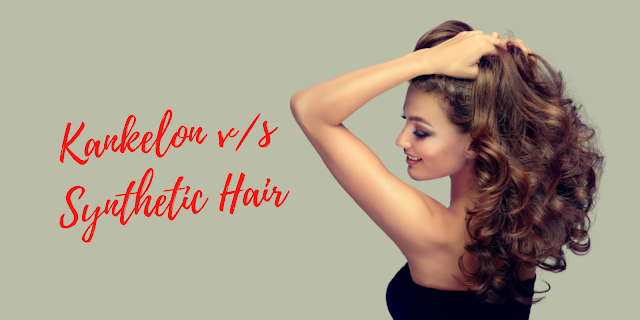The Difference Between Kankelon and Synthetic Hair - WIGgIT
Our hair is the natural crown we never take off, so we need to take proper care of them. However, sometimes due to lifestyle changes or some disease, we begin losing more strands than we can afford to. This is where wigs and weaves come into play. Wigs have gained a lot of popularity in the last couple of years and continue to do so.
Now, deciding which kind of wig is right for you is not an easy task, primarily because there are so many synthetic hair fibres. It becomes overwhelming to try and choose the right one for you especially if you're a beginner and do not know a lot about wigs. A widespread name you must have heard floating around in the wigs world is kankelon and other synthetic hair extensions for braids. In this blog, we will go through that to inform you about the kinds of synthetic hair fibres to help you make an informed choice.
What differentiates kankelon and synthetic hair?
Artificial hair is made from synthetic materials, such as nylon or acrylic. Kanekalon hair is the highest quality of synthetic hair and is usually worn for temporary use since it doesn't last as long as natural hair. Below are some of the critical differences between Kanekalon and regular synthetic hair.
Regular Synthetic
Artificial plastic fibres, often comprised of nylon or acrylic, are chemically treated into ultra-thin fibres to resemble genuine hair in synthetic hair in xpression hair extensions. It is available in a wide variety of colour and texture combinations. However, synthetic hair cannot be dyed or relaxed, unlike real hair, which can be altered with items like dye and relaxers. Additionally, using heated instruments to straighten it will lead it to melt.
Given that it is designed to be worn in a single style, synthetic hair requires very little upkeep but depending on the quality of the hair, it also has a propensity to matte excessively over time. But because it is an economical option, many people choose it. However, human hair is obviously, more enduring than synthetic fibres.
Kankelon
Because of its lifelike craftsmanship, synthetic hair extensions for braids of this kind are the most popular. Its extremely fine texture resembles that of human hair. Even after washing, it can keep its shape. It feels smooth to the touch and resembles natural hair despite being synthetic.
The "flame-retardant" ingredients used to make the fibres make them resistant to setting on fire. This enables low heat styling with an iron or curling iron up to 180 degrees Celsius on a Kanekalon-made product. It is a sturdy variety of artificial hair and can persist for quite a while. If maintained and cared for properly, it can last you for three months to a year at most.
The Similarities
In spite of this, there are some properties that indicate whether the hair is natural or synthetic. When synthetic hair burns, it produces black smoke while human hair emits white smoke. Synthetic hair also has a rubbery smell and melts slowly into a ball rather than quickly like human hair.
Moreover, if you notice human hair you would say they're not the same length and texture all around with some strands being shorter and longer than others. This indicates that when you curl or straighten them, not all strands are going to look the same and if they do, it's probably not natural.
The Takeaway
When buying wigs, you may come across various options and if you do not do your research properly, chances are, you will be overwhelmed with the available options. Knowing what you want is the best way to start. We hope by now, you know all the differences (and similarities) between kankelon and other synthetic hair used in wigs. Check out WIGgIT to find the wig of your dreams.


Comments
Post a Comment